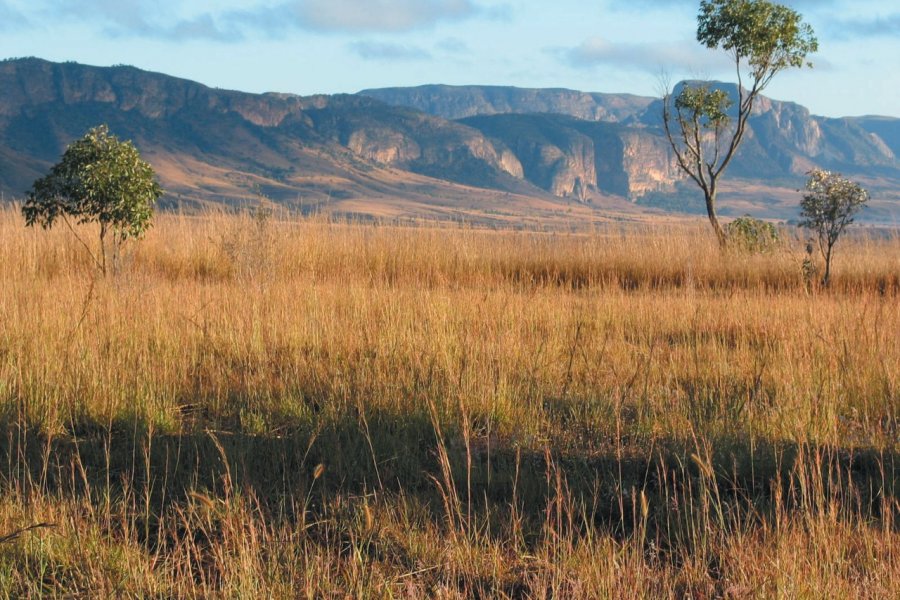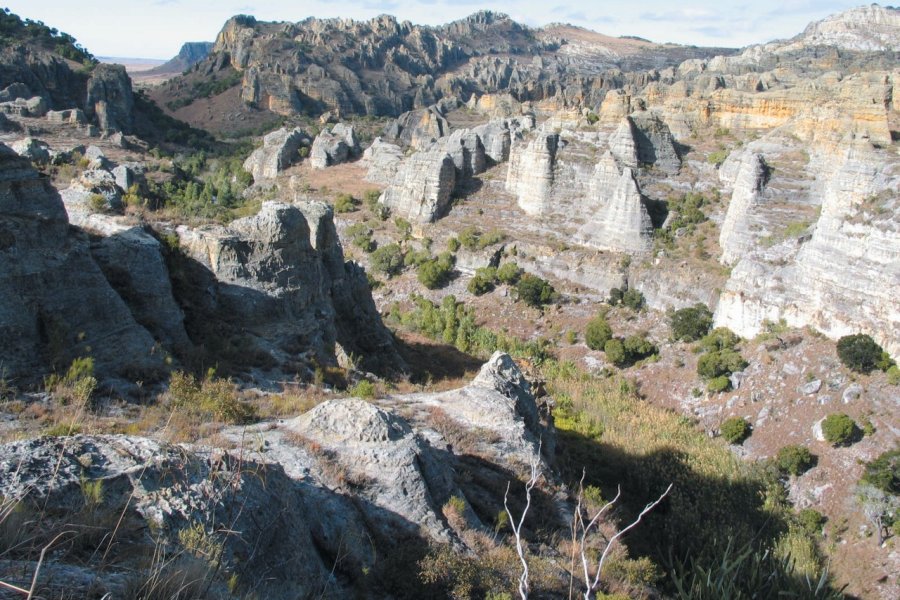Travel Guide Parc National De L’isalo
Find an accommodation
Advertising
This superb national park (81 540 ha), the most visited of the country, extends west of Ranohira, in the region of Ihorombe. One could easily spend two or three days there to immerse oneself in this exceptional nature. However, the prices have increased with the notoriety of the place so that one is generally satisfied with spending a full day there, the bare minimum. Thus, one will be able to admire at leisure the rising sun and the formidable blazes of the twilight on an almost lunar landscape... The Isalo offers indeed a series of canyons, sandstone peaks that go from red to pink, caves, masses of granite sculpted by the winds and waters. Elsewhere, there are plateaus hollowed out by craters, deserts of stone and silence, abrupt escarpments... In this landscape where everything seems mysterious, the wind that blows between the limestone massifs is loaded with meaning; perhaps it is the whisper of an ancestor... Indeed, the rocks of Isalo shelter burials, both Bara and Sakalava (who resided there before being driven out) making it a sacred land. Many places are fady and it is necessary to respect them: do not point at anything. Seven species of lemurs are listed in the park, including 4 nocturnal and 3 diurnal. During your walk, you will probably see catas, sifakas, and brown lemurs... not very shy. You will also find in the exceptional calm of this place 86 species of birds (of which the Malagasy drongo, the Benson's rock blackbird, a protected endemic species, or the magpie crow), as well as reptiles of all kinds (harmless), from the impressive lizard to the snakes (boa in particular) passing by frogs, of which the Boophis albilabris occidentalis, endemic (it can be observed close to the Nymphs' waterfall).The flora has about 1,200 species and includes aloes, thorny plants, rare palms such as the fire-resistant satrana(Bismarkia nobilis) and a spectacular climbing plant called "the elephant foot"(Pachypodium rosulatum). Note that 80% of the original forest was decimated by fire in 2011; a few rare species have survived by adapting (xerophilic species), such as Tapia or Heza (whose green wood is commonly used as firewood). The sabotse, an endemic plant, would have given its name to the massif.
What to visit Parc National De L’isalo?
Advertising
Suggested addresses Parc National De L’isalo
Weather at the moment
Advertising
Organize your trip with our partners Parc National De L’isalo
Transportation
Book your plane tickets
Car Rental
Boat rental
Accommodation & stays
Find a hotel
Holiday rental
Find your campsite
Tailor-made trip
Immersion travel
Services / On site
Activities & visits
Find a doctor







